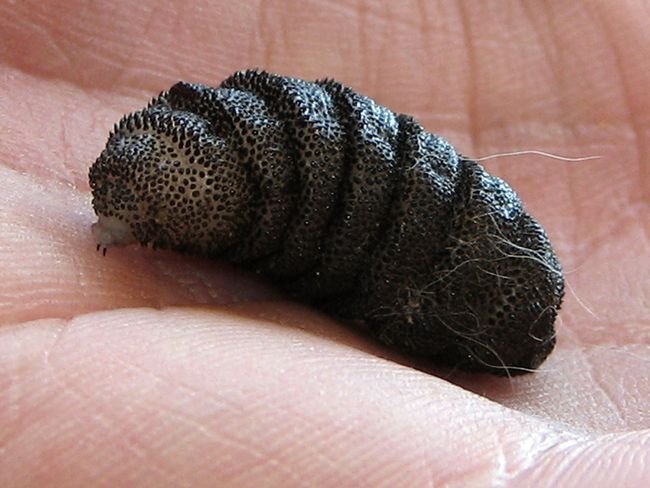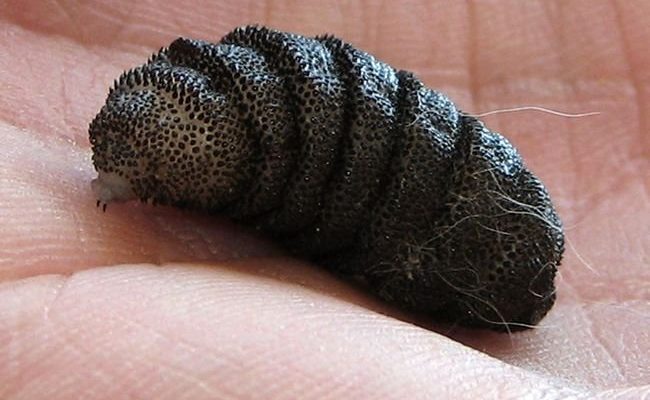
Imagine watching a caterpillar turn into a butterfly, but instead, we have these peculiar little creatures that find a way to live in a host before taking flight. Isn’t that just mind-boggling? In this journey, we’ll explore how these wolf worm larvae transition into adult botflies, unraveling their life cycle along the way. Let’s get to it.
What Are Wolf Worms?
Wolf worms refer specifically to the larvae of certain **botflies**, like the *Dermatobia hominis*, which are found in parts of Central and South America. These little guys have a unique way of getting around. Instead of simply crawling along the ground, they rely on other animals—like mammals—to travel and grow.
You might be wondering what they look like. These larvae are typically chunky and have a pale appearance. They can be as large as an inch long! But their size isn’t the only striking feature; their lifestyle is equally fascinating. They often find themselves burrowed beneath the skin of mammals, where they develop. This unique method of life makes them both intriguing and a bit unsettling.
What’s even more interesting is that adult botflies are quite different from their larvae. These adults have a look that resembles a cross between a housefly and a bumblebee. They’re not harmful to humans when they’re in the adult stage, but their larvae? That’s a different story.
The Lifecycle of Wolf Worms
The life cycle of wolf worms is a perfect example of nature’s creativity. It typically unfolds in several stages: **egg, larva, pupa, and adult**. Understanding this cycle helps make sense of their fascinating transformation.
1. **Egg Stage**: The cycle begins when a female botfly lays her eggs, often on a mosquito or another insect. This clever tactic ensures that the eggs are transported to a mammal host. It’s like sending a delivery via express mail!
2. **Larval Stage**: Once the mosquito lands on a host, the eggs hatch. The larvae then burrow into the skin, creating a small opening through which they can breathe. This is where they spend most of their growing time, munching away on the host’s tissues.
3. **Pupal Stage**: After several weeks of development, the larvae emerge from the host and fall to the ground. Here, they enter the pupal stage, transforming into adult botflies.
4. **Adult Stage**: Finally, they emerge as adults, ready to mate and repeat the cycle. This whole process can take anywhere from a few weeks to several months.
It’s a wild ride from a tiny egg to a fully grown botfly, and each stage plays a crucial role.
How Do Larvae Feed and Grow?
You might be surprised to learn that wolf worm larvae are not picky eaters. Once they burrow into a host’s skin, they start feeding on the tissue around them. They have a unique way of doing this. They create a small opening in the skin, which also allows them to breathe.
You can think of it as creating their own little room, where they can grow and thrive. They can take in nutrients while also allowing their host to stay relatively healthy, at least for a while. This relationship is a fascinating example of a parasite living in balance with its host, although it can cause discomfort and health issues for the host in the long run.
As they grow, they can reach sizes up to 2.5 cm long. Isn’t it wild to imagine a creature so small having such an impact? Just like a sponge, they absorb nutrients and energy, allowing them to transition to the next stage in their life cycle.
The Transition to Pupal Stage
Once wolf worm larvae have reached their full size, it’s time for them to make a big move: they leave their host. You might think this sounds pretty harsh, but it’s essential for their survival. After weeks of feeding, they’ll drop off, looking for the perfect spot to pupate.
During this stage, they dig into the soil, where they can safely undergo metamorphosis. Here’s where the magic really happens. These larvae start to change completely. Their bodies reconfigure, and they develop into the adult form. This process can take several weeks, often depending on environmental conditions.
While they’re undergoing this transformation, they’re pretty vulnerable. Just like how a caterpillar faces dangers when it’s in its cocoon, pupating botfly larvae are at risk from predators. It’s a tough world out there, but it’s all part of nature’s plan.
Adult Botflies: What Happens Next?
After their time as pupae, the adult botflies emerge ready to take on the world. They’re not just out for a leisurely flight; their main goal is to reproduce. Adult females are determined to lay their eggs on a host, continuing the cycle.
It’s interesting to note that adult botflies don’t feed like other insects. Instead, they rely on nutrients gathered during their larval stage. If you think about it, they only focus on finding a mate and ensuring the next generation has a chance to thrive.
This period of their life is all about **reproduction**. Females can lay hundreds of eggs at a time. Once again, they’ll rely on mosquitoes or other insects to help transport their eggs to new hosts. It’s a fascinating way to ensure their survival, allowing the life cycle to start all over again.
The Ecological Importance of Botflies
You might be surprised to learn that despite their strange lifestyle, botflies play a role in the ecosystem. They’re just one piece in the complex web of life.
Botflies serve as prey for various animals, including birds and other insects. Their larvae also help decompose organic material, which can be beneficial for soil health. This process contributes to nutrient cycling, enabling plants and other organisms to thrive.
However, they can also signify an imbalance in ecosystems. For instance, in regions where animal populations are low, a spike in botfly larvae could indicate the need for ecological intervention. Understanding their role helps us maintain the balance in nature, highlighting how even the most curious creatures have a place in the bigger picture.
The journey from wolf worm larvae to adult botflies is nothing short of remarkable. From tiny eggs hatching on a host to larvae that burrow and feed, and finally evolving into flying adults ready to reproduce, it’s a cycle filled with intrigue and biological wonders.
Understanding this transformation not only sheds light on these unique creatures but also highlights the complexity of life in our ecosystems. Next time you think about botflies, remember that behind their strange existence is a story of survival, adaptation, and the persistence of nature.
So, whether you’re learning about wolf worms for the first time or just brushing up on your entomology, I hope this exploration has piqued your curiosity. Nature is full of surprises, and understanding creatures like botflies can help us appreciate the world around us even more.

